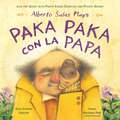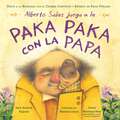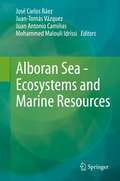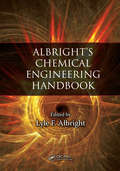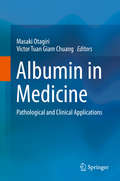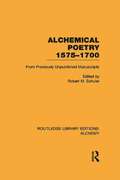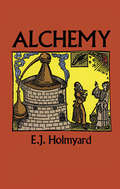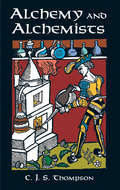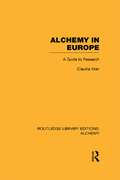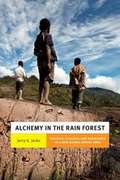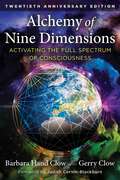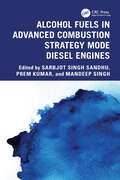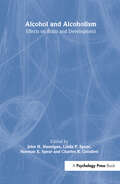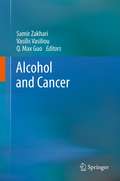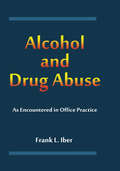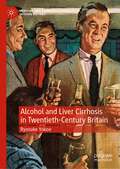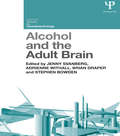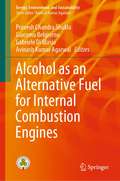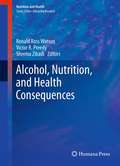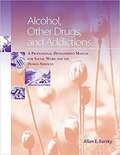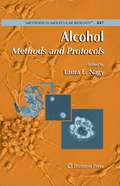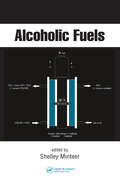- Table View
- List View
Alberto Salas Plays Paka Paka con la Papa: Join the Quest with Peru's Famed Scientist and Potato Expert
by Sara Andrea FajardoWhat can a potato do? To Peruvian scientist Alberto Salas, they have the power to change the world. Go on the hunt with Alberto for for wild potatoes before they go extinct in this playful picture book biography, gorgeously illustrated by Caldecott-honoree Juana Martinez-Neal. <P><P> High up in the Andes mountains of Peru, agricultural scientist Alberto Salas is on a quest. A quest... for potatoes. Up and down the Andes mountains he goes, playing an epic game of paka paka con la papa, potato hide and seek. These potatoes are special: they have the power to feed the world. Alberto doesn't have a second to waste. The climate is changing and Alberto must find each and every one to save them before they go extinct. The game is on! Alberto races and peers and prods. Drives and trods and climbs. Will he find the potato he seeks? Will he win the game of paka paka con la papa? <P><P> Author Sara Andrea Fajardo’s spirited biography about “the godfather of potatoes” is paired with lush art by Caldecott-honoree Juana Martinez-Neal to capture how celebrated scientist Alberto Salas brings joy, curiosity, and fun to his very important, life-changing work.
Alberto Salas juega a la paka paka con la papa [Spanish edition]: Únete a la búsqueda con el célebre científico y experto en papas peruano
by Sara Andrea FajardoEsta biografía ilustrada y oda a la conservación y ciencia acompaña al agrónomo peruano Alberto Salas en su búsqueda de papas silvestres antes de que se extingan, con ilustraciones de la ganadora de un Caldecott Honor, Juana Martínez-Neal. Muy alto en la cordillera de los Andes en Perú, el ingeniero agrícola Alberto Salas anda en una búsqueda. En búsqueda… de papas.Arriba y abajo de las montañas va, jugando un juego épico de paka paka con la papa, a las escondidas con la papa. Estos tubérculos son especiales: tienen el poder de alimentar y salvar al mundo.Alberto no tiene tiempo que perder. El clima está cambiando en los Andes y él debe encontrar y rescatar cada una de las variedades de papa antes de que se extingan.¡El juego ya empezó!Alberto corre, busca detenidamente y escarba. Maneja y camina y trepa. ¿Encontrará la papa que busca? ¿Podrá ganar este juego de paka paka con la papa?En su debut como autora con esta energética biografía sobre el “padrino de las papas”, Sara A. Fajardo une fuerzas con el rico y lúdico arte de la ilustradora galardonada con el premio Caldecott, Juana Martinez Neal, capturando cómo el celebrado agrónomo Alberto Salas realiza su imprescindible trabajo con deleite, curiosidad y regocijo.
Alboran Sea - Ecosystems and Marine Resources
by José Carlos Báez Juan-Tomás Vázquez Juan Antonio Camiñas Mohammed Malouli IdrissiThe Alboran Sea represents a regional Mediterranean space where North and South worlds merges, creating a geopolitical region where marine resources and maritime activities should be managed from a national and international perspectives. It is widely known, that currently the planet is suffering a global change, and it is also affecting the Alboran Sea, its ecosystems and populations. An important first step to update a paramount vision on this region is to understand the climatic, geologic and oceanographic, including biochemical cycles, process which shapes the rich geodiversity, biodiversity, the productivity, and the sustainable use of the marine resources from Alboran Sea. The fisheries management system should take into account marine environmental variability to achieve biological sustainability of marine resources. Well-funded policy-makers’ decisions require a sound science based knowledge of the interaction between the marine environment and commercial stocks. This is because the role of marine environment in the evolution of fish stocks is sometimes even more important than the one played by fishers in the commercial exploitation of them. Finally, we should analyze the different aspects of political context that could affect the management of the resources from Alboran Sea in the context of climate change. This book reviews different aspects of the Alboran Sea to help understand the current situation from the original Tethis Ocean. The book is divided into four blocks: (i) Oceanographic, geological and ecological context (chapters 2 to 7), (ii) biodiversity and ecosystems distribution (chapters 8 to 12), (iii) fisheries resources and aquaculture (chapters 13 to 20), and (iv) conservation, management and marine polices (chapters 21 to 25).
Albright's Chemical Engineering Handbook
by Lyle F. AlbrightTaking greater advantage of powerful computing capabilities over the last several years, the development of fundamental information and new models has led to major advances in nearly every aspect of chemical engineering. Albright's Chemical Engineering Handbook represents a reliable source of updated methods, applications, and fundamental co
Albumin in Medicine: Pathological and Clinical Applications
by Masaki Otagiri Victor Tuan Giam ChuangThis book presents a comprehensive overview of medical and pharmaceutical applications of human serum albumin (HSA), with updates on structural aspects of albumin from the perspectives of X-ray crystallography and NMR, endogenous and exogenous ligand binding of albumin in various pathological conditions, and genetic variants and their phenotypes. Rapid progress and development of its applications have resulted in outstanding results for which albumin has clearly been proven to be a robust biomaterial. Contributions from leading international experts in this field show how HSA is applied to diagnosis, therapy, drugs, and treatment, with a comprehensive introduction of HSA. This volume will appeal to scientists in pharmaceutical and medical research including pharmaceutical chemists, pharmacokineticists, toxicologists, and biochemists not only in academia but also in industry. Readers can effectively acquire the most recent knowledge of applications of HSA and its impact on human health in a single volume.
Alchemical Poetry, 1575-1700: From Previously Unpublished Manuscripts (Routledge Library Editions: Alchemy #Vol. 5)
by Robert M. SchulerOf interest to interdisciplinary historians as well as those in various other fields, this book presents the first publication of 14 poems ranging from 12 to 3,000 lines. The poems are printed in the chronological order of their composition, from Elizabethan to Augustan times, but nine of them are verse translations of works from earlier periods in the development of alchemy. Each has a textual and historical introduction and explanatory note by the Editor. Renaissance alchemy is acknowledged as an important element in the histories of early modern science and medicine. This book emphasises these poems’ expression of and shaping influence on religious, social and political values and institutions of their time too and is a useful reference work with much to offer for cultural studies and literary studies as well as science and history.
Alchemy (Dover Books on Engineering)
by E. J. HolmyardAlchemy is thought to have originated over 2000 years ago in Hellenic Egypt, the result of three converging streams: Greek philosophy, Egyptian technology and the mysticism of Middle Eastern religions. Its heyday was from about 800 A.D. to the middle of the seventeenth century, and its practitioners ranged from kings, popes, and emperors to minor clergy, parish clerks, smiths, dyers, and tinkers. Even such accomplished men as Roger Bacon, Thomas Aquinas, Sir Thomas Browne and Isaac Newton took an interest in alchemical matters.In its search for the "Philosopher's Stone" that would transmute base metals into silver and gold, alchemy took on many philosophical, religious and mystical overtones. These and many other facets of alchemy are explored with enormous insight and erudition in this classic work. E. J. Holmyard, a noted scholar in the field, begins with the alchemists of ancient Greece and China and goes on to discuss alchemical apparatus, Islamic and early Western alchemy; signs, symbols, and secret terms; Paracelsus; English, Scottish and French alchemists; Helvetius, Price, and Semler, and much more.Ranging over two millennia of alchemical history, Mr. Holmyard shows how, like astrology and witchcraft, alchemy was an integral part of the pre-scientific moral order, arousing the cupidity of princes, the blind fear of mobs and the intellectual curiosity of learned men. Eventually, however, with the advent and ascension of the scientific method, the hopes and ideas of the alchemists faded to the status of "pseudo-science." That transformation, as well as alchemy's undeniable role as a precursor of modern chemistry, are brilliantly illuminated in this book. Students of alchemy, chemistry, the history of science, and the occult, plus anyone interested in the origin and evolution of one of mankind's most enduring and influential myths, will want to have a copy of this masterly study.
Alchemy and Alchemists
by C. J. ThompsonAlchemy, whose beginnings — possibly in Egypt, Babylon, India, or China — are ancient and obscure, remained undocumented until about 2500 BC. Although it may have originated with metallurgy, the practice rapidly developed an association with magic, pharmacy, and astrology. In this richly illustrated and amply researched study, a noted expert traces the long history of alchemy, from its murky start to modern times. Hermes Trismegistus and other famous alchemists appear here, along with discussions of the craft's associations with chicanery (as memorably portrayed in Ben Jonson's 1610 comedy, The Alchemist), and its role in the secret society of Rosicrucians. Additional topics include the alchemist's laboratory and equipment, alchemical symbols and secret alphabets, noteworthy manuscripts, the influence of astrology, and more. Although regarded today as a pseudoscience, alchemy gave rise to scientific chemistry. This volume illustrates the ways in which efforts to transmute metals — such as the search for the ever-elusive philosopher's stone — stimulated experimentation with hitherto untried substances, leading to improved knowledge of the materials vital to applied chemistry. Anyone intrigued by the origins and practices of this age-old and still-mysterious discipline, as well as those interested in the history of chemistry, will appreciate this concise, authoritative study.
Alchemy in Europe: A Guide to Research (Routledge Library Editions: Alchemy)
by Claudia KrenThis comprehensive annotated bibliography, first published in 1990, guides the user helpfully through where to find information on various elements on alchemy when researching. Divided into categories to aid finding the right area of interest, this book forms a unique reference tool.
Alchemy in the Rain Forest: Politics, Ecology, and Resilience in a New Guinea Mining Area
by Jerry K. JackaIn Alchemy in the Rain Forest Jerry K. Jacka explores how the indigenous population of Papua New Guinea's highlands struggle to create meaningful lives in the midst of extreme social conflict and environmental degradation. Drawing on theories of political ecology, place, and ontology and using ethnographic, environmental, and historical data, Jacka presents a multilayered examination of the impacts large-scale commercial gold mining in the region has had on ecology and social relations. Despite the deadly interclan violence and widespread pollution brought on by mining, the uneven distribution of its financial benefits has led many Porgerans to call for further development. This desire for increased mining, Jacka points out, counters popular portrayals of indigenous people as innate conservationists who defend the environment from international neoliberal development. Jacka's examination of the ways Porgerans search for common ground between capitalist and indigenous ways of knowing and being points to the complexity and interconnectedness of land, indigenous knowledge, and the global economy in Porgera and beyond.
Alchemy of Nine Dimensions: Activating the Full Spectrum of Consciousness
by Barbara Hand Clow• Examines how each dimension influences Earth, its levels of creative expression, and the sciences that describe each one• Provides meditations to open you to the experience of each dimension and all nine dimensions as an integrated whole• Includes new evidence for the nine dimensions from the supercomputer Blue Brain Project and recently discovered ancient technologyAs revealed by the Pleiadians via renowned author Barbara Hand Clow, Earth holds nine dimensions of consciousness that humans can currently access. Long ago, the ability to access all nine dimensions was natural for humans. As we collectively heal from ancestral trauma and enter the Age of Light, our access to the nine dimensions is reopening and our ability to learn from and consciously utilize these higher intelligences in our lives is being restored.In this illuminating guide, Barbara Hand Clow shows how the nine dimensions of consciousness are now being verified by contemporary science. She explains how the first dimension is the center of the Earth and the source of grounding ourselves, the second is between Earth&’s center and the surface, the third is linear space and time experienced on Earth&’s crust, the fourth is the realm of our collective mind, and the higher five celestial dimensions are where we contact the transcendent. She examines how each dimension influences Earth, the sciences that operate there, and the levels of creative expression available. Additionally, Gerry Clow has provided both written and audio meditations to open you to the experience of each dimension and all nine dimensions as an integrated whole.In this 20th anniversary edition, Clow includes updates from her continuing research, including evidence from the supercomputer Blue Brain Project, which mapped nine dimensions in the human brain. She also describes how recent discoveries of ancient technology mirror the Pleiadian dimensional system. Providing a journey through the complex ideas of both modern science and esoteric wisdom, this guide allows you to awaken to the full spectrum of multidimensional consciousness and to connect deeply to the center of our planet and the Divine Cosmos that surrounds us all.
Alcohol Fuels in Advanced Combustion Strategy Mode Diesel Engines
by Prem Kumar Mandeep Singh Sarbjot Singh SandhuAlcohol Fuels in Advanced Combustion Strategy Mode Diesel Engines investigates the utilization of alcohol-based fuels in diesel engines with specific emphasis on advanced combustion modes, including homogeneous charge compression ignition (HCCI), premixed charge compression ignition (PCCI), partially premixed compression ignition (PPCI), and dual fuel reactivity-controlled compression ignition (RCCI).Exploring the application of wavelet power spectrum analysis, the book demonstrates its use as a technique for evaluating the stability of combustion in a diesel engine operating in low-temperature combustion (LTC) mode. It identifies the most effective injection timing when using alcohol-diesel blended fuels across different engine loads to achieve the low-temperature PPC strategy.The book will interest industry professionals in automotive and fuels engineering working with alcohol fuels, advanced combustion mode diesel engines, engine instrumentation, and environmental challenges.
Alcohol and Alcoholism: Effects on Brain and Development
by Norman E. Spear John H. Hannigan Linda P. Spear Charles R. GoodlettThis is the first volume that focuses on the lifespan neurobehavioral factors likely to determine susceptibility to alcohol abuse and its consequences. The chapters offer careful analysis of the effects of ethanol on the fetus, the infant, the adolescent, and the adult. The authors include behavioral neuroscientists and clinical neuropsychologists. Their topics range from the neurochemical and neuroanatomical consequences of prenatal alcohol to the cognitive consequences of prenatal alcohol on preschool and school-age children. The impact of genetics on sensitivity to alcohol is considered in terms of analytic tests using techniques of behavioral genetics and molecular biology. The consequences of exposure to alcohol during breastfeeding are described in experiments with human infants. The alcoholism that develops in adulthood is analyzed through the experimental study of relapse from alcohol deprivation and assessment of neuropsychological impairments and treatment for alcoholics. Drawing on extensive research that has applied techniques from molecular neurobiology and tests of learning and memory to the clinical assessment and treatment of alcoholics. The volume answers recent questions raised by the National Institute of Alcohol Abuse and Alcoholism and the National Institute of Drug Abuse about the role of early experience in susceptibility to later abuse of alcohol and other drugs. Although epidemiological studies can describe the problem, solutions in terms of mechanisms that mediate these effects will be found only with the kinds of experimentally oriented approaches the chapter authors describe.
Alcohol and Cancer (Advances in Experimental Medicine and Biology #815)
by Samir Zakhari Vasilis Vasiliou Q. Max GuoThe World Health Organization has identified chronic alcohol consumption as one of the top ten risk factors for worldwide burden of disease. The International Agency for Research on Cancer has identified alcohol as carcinogenic to humans, including cancers of the upper aerodigestive tract, colon, liver and breast. Alcohol's actions may be direct e.g. effects on retinoic acid and one-carbon metabolism, or indirect, through metabolites such as acetaldehyde and reactive oxygen species or through various signaling pathways that influence cell cycle and apoptosis that may contribute to carcinogenesis. This report reviews the state of the art in alcohol-related cancer research in ten chapters.
Alcohol and Cancer: Proceedings of the Third International Conference (Advances in Experimental Medicine and Biology #1032)
by Samir Zakhari Vasilis Vasiliou Helmut K. Seitz Lopa MishraFollowing the Third Alcohol and Cancer Conference, this volume compiles the most up-to-date research on the role of alcohol consumption in carcinogenesis, from epidemiology to pathology metabolism and stem cells. More specifically, it delves into the effects of alcohol consumption and thyroid cancer, CD133+ progenitor cells, carcinogenic iron accumulation, developmental morphogens, and cancer-inducing epigenetic changes. Alcohol and Cancer: Proceedings of the Third International Conference is a timely update to Biological Basis of Alcohol-Induced Cancer, which followed the Second Alcohol and Cancer Conference, compiling cutting-edge research from graduate students, young scientists, and researchers. It is ideal for graduate students and researchers in oncology, hepatology, epigenetics, and alcohol consumption.
Alcohol and Drug Abuse as Encountered in Office Practice
by Frank L. IberThis book has been written to serve as a manual for physicians practicing in a private office setting to recognize and recommend appropriate treatment for patients believed to be substance abusers. While it is not written for drug abuse specialists, it provides information regarding the diagnosis and treatments a competent, concerned physician can provide without becoming immersed in addiction treatment. Topics discussed include the degree to which a physician should become involved, when it is appropriate to refer, using other professions and volunteer groups, and useful medications. Guidelines for recognizing substance abuse, testing to confirm the abuse, confronting the patient, and motivating the patient into specific treatment are also presented. Tables and illustrations are used to summarize major points, making this an extremely useful reference tool for internists and other non-specialist private practitioners.
Alcohol and Liver Cirrhosis in Twentieth-Century Britain (Medicine and Biomedical Sciences in Modern History)
by Ryosuke YokoeThe relationship between alcohol consumption and liver cirrhosis has long been contested by doctors and medical professionals, creating numerous implications for the public reputation of alcohol in Britain. Despite this, it was not until the 1970s that cirrhosis came to be understood as an ‘alcoholic disease’. This book contextualises developments in this debate through the twentieth century by examining the significant influence that medical expertise had on policy responses to alcohol misuse, as well as the social reputation of alcohol consumption. It demonstrates how the degree to which drinking was seen to be responsible for liver disease directly shaped how different groups, such as the temperance movement and the drinks industry, exaggerated or downplayed the destructive properties of alcohol. Covering a series of themes including the science of disease causation, the social standing of medical expertise, and alcohol and public health policy, this book argues that in order to properly understand the trajectory of debates around drinking we need to consider the twentieth-century ‘alcohol problem’ as primarily a medical issue. Contrary to the tendency by existing works to disassociate perceptions and responses to alcohol use from the objective knowledge of its effects on the body, this book shows that medical understandings of liver disease influenced how alcohol was conceptualised in relation to its harms. Offering a fresh perspective on the interaction between scientific knowledge and policy during the twentieth century, this book provides insights for those researching the social, political and cultural history of modern Britain, as well as historians of medicine and health.
Alcohol and the Adult Brain (Current Issues in Neuropsychology)
by Brian Draper Jenny Svanberg Adrienne Withall Stephen BowdenThe research literature on the impact of alcohol on the brain has seen a rapid expansion in recent years. Alcohol and the Adult Brain presents an up-to-date overview of some of the issues relevant to understanding and working with people with cognitive impairment as a result of chronic alcohol use. One issue causing barriers to effective treatment and care is the stigma associated with alcohol dependence, resulting in the belief that difficulties associated with alcohol related brain damage (ARBD) are ‘self-inflicted’. Cognitive changes resulting from alcohol excess and poor nutrition can directly affect an individual’s ability to motivate themselves, make decisions, and make the informed choices that underlie behaviour change. Attitudes held by professionals, reinforced by societal norms, that a person is ‘choosing to drink’ and ‘not motivated to engage with treatment’, in combination with the often subtle cognitive deficits associated with ARBD, can result in a lack of timely intervention, with enormous personal, social and economic cost. The chapters in this book set ARBD in a social and cultural context, provide discussion of the difficulties in definition and diagnosis, and outline the structural brain changes and neuropsychological deficits associated with chronic alcohol use. The book provides an overview of recent research on ARBD, including impairments associated with Wernicke-Korsakoff Syndrome, and discusses up to date recommendations for managing and working with this complex and varied disorder. Alcohol and the Adult Brain will be essential for students and researchers working with ARBD and for practitioners in a range of health, social care and voluntary settings.
Alcohol as an Alternative Fuel for Internal Combustion Engines (Energy, Environment, and Sustainability)
by Avinash Kumar Agarwal Pravesh Chandra Shukla Giacomo Belgiorno Gabriele Di BlasioThis book covers different aspects related to utilization of alcohol fuels in internal combustion (IC) engines with a focus on combustion, performance and emission investigations. The focal point of this book is to present engine combustion, performance and emission characteristics of IC engines fueled by alcohol blended fuels such as methanol, ethanol and butanol. The contents also highlight the importance of alcohol fuel for reducing emission levels. Possibility of alcohol fuels for marine applications has also been discussed. This book is a useful guide for researchers, academics and scientists.^
Alcohol, Nutrition, and Health Consequences (Nutrition and Health)
by Victor R. Preedy Ronald Ross Watson Sherma ZibadiChronic alcohol use is associated with heart, liver, brain, and other organ pathology. Alcohol is a drug of abuse and a caloric food and it causes poor intake and absorption of nutrients, thus playing a major role in many aspects of clinical consequences. Alcohol use lowers consumption of fruit and vegetables, lowers tissue nutrients, and, in some cases, requires nutritional therapy by clinicians. Alcohol, Nutrition, and Health Consequences will help the clinician define the causes and types of nutritional changes due to alcohol use and also explain how nutrition can be used to ameliorate its consequences. Chapters present the application of current nutritional knowledge by physicians and dietitians. Specific areas involving alcohol-related damage due to nutritional changes are reviewed, including heart disease, obesity, digestive tract cancers, lactation, brain function, and liver disease. In addition, alcohol's effects on absorption of minerals and nutrients, a key role in causing damage are treated. The importance of diet in modifying alcohol and its metabolite damage is also explained. Alcohol, Nutrition, and Health Consequences is essential reading for alcohol therapists and researchers as well as primary care physicians and dietitians and is an easy reference to help the clinician, student, and dietitian comprehend the complex changes caused by direct and indirect effects of ethanol at the cellular level via its nutritional modification.
Alcohol, Other Drugs and Addictions: A Professional Development Manual for Social Work and the Human Services
by Allan Edward BarskyTo help prepare you for the realities of working with clients affected by addictions, this beneficial text provides you with the necessary tools needed to competently translate addictions theory into practice. It offers a thorough examination of a range of models and perspectives for helping, and it encourages critical thinking to best match approaches with clients and situations. Presented in a work-text format, this book is full of cases, exercises, role-plays, and questions to increase your understanding of concepts and application to practice.
Alcohol: Methods and Protocols (Methods in Molecular Biology #447)
by Laura E. NagyThis book examines the pleiotropic effects of ethanol in animal and cell culture models through a collection of detailed procedures written by experts in the field. Sections present clearly defined models of ethanol exposure, recent advances in the development of specific methodologies to mimic the impact of ethanol metabolism in cultured cells, and methodologies to investigate a variety of cells and tissues that are known to be disrupted by ethanol, amongst other topics.
Alcoholic Fuels
by Shelley MinteerScientists and engineers have made significant advances over the last two decades to achieve feasible, cost-efficient processes for the large-scale production of alternative, environmentally friendly sources of energy. Alcoholic Fuels describes the latest methods for producing fuels containing varying percentages of alcohol alongside the var
Alcoholism in America: From Reconstruction to Prohibition
by Sarah W. TracyDespite the lack of medical consensus regarding alcoholism as a disease, many people readily accept the concept of addiction as a clinical as well as a social disorder. An alcoholic is a victim of social circumstance and genetic destiny. Although one might imagine that this dual approach is a reflection of today's enlightened and sympathetic society, historian Sarah Tracy discovers that efforts to medicalize alcoholism are anything but new.Alcoholism in America tells the story of physicians, politicians, court officials, and families struggling to address the danger of excessive alcohol consumption at the turn of the century. Beginning with the formation of the American Association for the Cure of Inebriates in 1870 and concluding with the enactment of Prohibition in 1920, this study examines the effect of the disease concept on individual drinkers and their families and friends, as well as the ongoing battle between policymakers and the professional medical community for jurisdiction over alcohol problems. Tracy captures the complexity of the political, professional, and social negotiations that have characterized the alcoholism field both yesterday and today.Tracy weaves American medical history, social history, and the sociology of knowledge into a narrative that probes the connections among reform movements, social welfare policy, the specialization of medicine, and the social construction of disease. Her insights will engage all those interested in America's historic and current battles with addiction.
Aldehyde Dehydrogenases: From Alcohol Metabolism to Human Health and Precision Medicine (Advances in Experimental Medicine and Biology #1193)
by Jun Ren Yingmei Zhang Junbo GeThis volume covers the science of ALDH enzymes in relation to chronic disease processes and the future therapeutic potentials of targeting ALDH in these processes. It thoroughly reviews the roles of ALDH family in alcohol metabolism, as well as recent findings of their emerging roles in a variety of human pathologies such as cardiovascular diseases, diabetes, obesity, stroke, cancer, liver diseases and kidney diseases. Delicate contribution of ALDH enzymes in the therapeutics against chronic diseases is also discussed. It demonstrates the unique value of targeting genetic polymorphism in ALDH enzymes in personalized medicine. The book will appeal to scientists, physicians, graduate and professional students in the fields of ALDH enzymes, alcohol metabolism, cardiometabolic and other chronic diseases. Pharmaceutical and other companies developing new tools for cardiometabolic and chronic diseases treatment will also find this a valuable resource.
